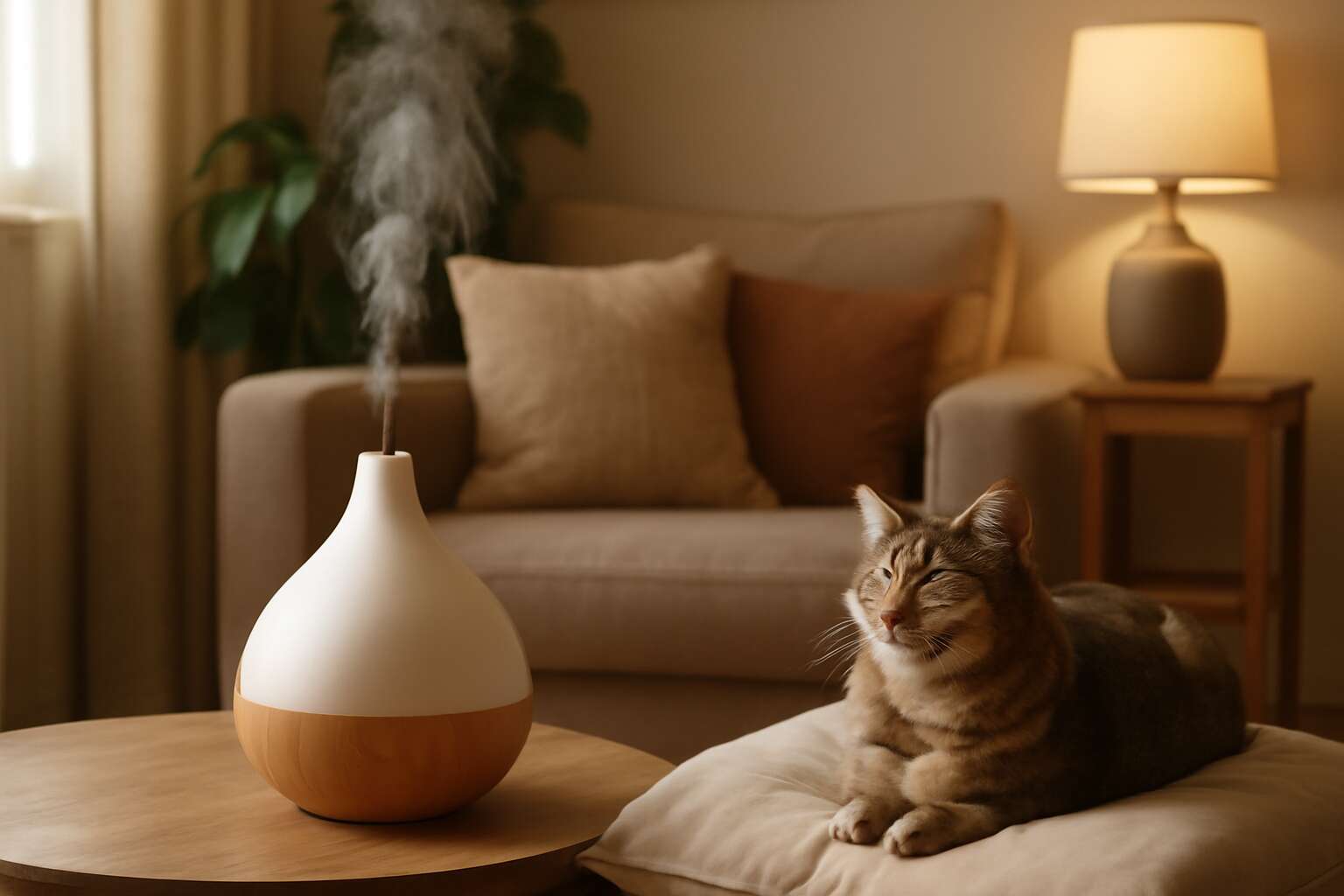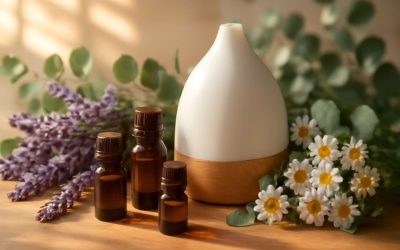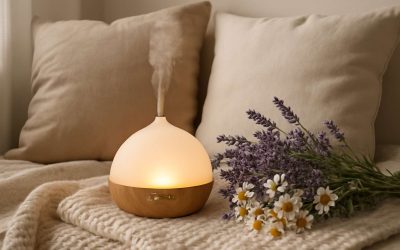Understanding Aromatherapy Diffusers and Their Components
What Are Aromatherapy Diffusers? – Definition and types of diffusers (ultrasonic, nebulizers, heat, etc.)
Imagine a gentle breeze carrying the delicate scent of lavender or eucalyptus—this is the magic of aromatherapy diffusers. These devices transform essential oils into fine mists or vapours, enveloping a space in soothing aromas. But before you fill your living room with fragrant mist, it’s vital to understand the different types of diffusers and their components. Are aromatherapy diffusers safe for cats? is a question that lingers in every pet owner’s mind, especially when these devices become part of our daily sanctuary.
There are several varieties of diffusers, each with unique mechanisms. Ultrasonic diffusers use high-frequency vibrations to create a cool mist, dispersing essential oils without heat. Nebulizers, on the other hand, operate by transforming oils into concentrated vapour, delivering a potent burst of aroma without diluting the oils with water. Heat diffusers warm oils to release scent, but this method can sometimes alter the chemical composition of the oils, raising concerns about safety. Understanding these differences helps in evaluating if a particular diffuser is suitable for a pet-friendly environment.
When considering whether aromatherapy diffusers are safe for cats, it’s essential to examine their components. An ultrasonic diffuser, for instance, uses water and ultrasonic waves, making it generally safer than heat-based options. Yet, not all essential oils are created equal—some can be toxic to cats. A careful choice of oils, combined with an awareness of diffuser type, can make all the difference in maintaining a harmonious, safe space for your feline friends.
Common Essential Oils Used in Diffusers – Popular oils and their aromatic properties
Understanding the inner workings of aromatherapy diffusers reveals a delicate dance between science and scent. These devices, often shrouded in mist and mystery, rely on components that can influence their safety—particularly when feline companions are involved. Ultrasonic diffusers, for example, utilise water and ultrasonic waves to generate a gentle, cool vapour that disperses essential oils without heat, making them a popular choice for pet-friendly spaces. Conversely, heat diffusers warm oils to release their aromatic essence, but this process can alter the oils’ chemical composition, raising concerns about toxicity for cats. Knowing the nuances of these components is vital for those pondering, ‘are aromatherapy diffusers safe for cats?’
When selecting essential oils for use in diffusers, the potency and toxicity of certain scents become a matter of grave importance. Some oils, like lavender and chamomile, are often considered safer and may even have calming properties, yet others—such as tea tree or eucalyptus—pose a significant risk to feline health. The key lies in understanding which oils are compatible with your diffuser type and ensuring they are used at appropriate dilutions. Here are some popular oils and their aromatic virtues:
- Lavender: Known for relaxation and gentle tranquillity.
- Eucalyptus: Refreshing and invigorating but potentially hazardous for cats.
- Chamomile: Calming and soothing, often used for stress relief.
- Peppermint: Energising but can irritate feline respiratory systems.
In the shadowed world of aromatherapy, the allure of fragrant mist can mask peril. As you navigate the labyrinth of essential oils and diffuser varieties, always ponder whether your choices serve the safety of your feline companions. After all, the line between serenity and danger can be perilously thin, especially when it comes to our curious, sensitive cats.
How Diffusers Disperse Aromatic Compounds – Mechanism of operation and dispersion methods
In the shadowy realm of scent and science, understanding how aromatherapy diffusers operate is essential—especially when feline lives hang in the balance. These devices are not merely vessels of fragrant mist but intricate contraptions that manipulate aromatic compounds through various mechanisms of dispersion. At their core, diffusers transform essential oils into an invisible, ephemeral veil—an act of alchemy that can either soothe or summon peril.
Ultrasonic diffusers, the most benevolent in appearance, utilise high-frequency vibrations to create a fine water and oil mist, dispersing aromatic molecules gently into the air. This cool vapour preserves the delicate integrity of the oils, making them a preferred choice for pet-friendly spaces. In stark contrast, heat diffusers warm the oils, releasing their essence through a process that can subtly alter the chemical composition—sometimes transforming harmless scents into toxic spectres for inquisitive cats.
The mechanism of dispersion is more than mere spectacle; it’s a delicate ballet of physics and chemistry. Whether via ultrasonic waves, nebulisation, or heat, each method influences not only the dispersion but also the potential safety of your chosen oils. When pondering, ‘are aromatherapy diffusers safe for cats?’ it’s vital to grasp these underlying processes, for the difference between tranquil ambiance and toxic trap hinges on understanding these unseen dances of scent.
Cats and Aromatic Substances: What You Need to Know
Cats’ Sense of Smell and Sensitivity – How cats perceive scents differently from humans
Cats possess a remarkable sense of smell—estimated to be about 14 times more sensitive than humans—which means they perceive scents on a completely different level. Their olfactory system is finely tuned to detect even the faintest odours, often alerting them to changes in their environment that we might overlook. This heightened sensitivity can make certain aromatic substances overwhelming or even distressing for them. When considering whether aromatherapy diffusers are safe for cats, it’s essential to remember that many essential oils used in diffusers are potent enough to trigger adverse reactions.
Understanding how cats perceive scents differently from humans is crucial. While a soothing lavender scent might seem harmless to us, it could be irritating or toxic to a feline companion. Some essential oils, such as tea tree, eucalyptus, or citrus, are known to be particularly harmful to cats. Therefore, if you’re contemplating using an aromatherapy diffuser around your feline friend, it’s vital to consider their unique olfactory sensitivities and the potential risks involved. After all, a happy and healthy cat relies on a safe environment free from strong or harmful aromatic substances.
Potential Toxicity of Essential Oils for Cats – Common essential oils that are harmful to cats
Within the delicate tapestry of a feline’s world, scents are not mere fragrances but potent signals—an olfactory symphony perceived with an intensity that surpasses human sensation. When pondering the question, are aromatherapy diffusers safe for cats, one must recognise that not all aromatic substances are benign. Essential oils, with their concentrated essence, can transform from soothing serenades into perilous hazards in an instant.
Particularly concerning are oils such as tea tree, eucalyptus, and citrus, which are known to be potentially toxic to cats. These oils, when dispersed through diffusers, can cause a cascade of adverse reactions—from skin irritation to severe respiratory distress. The danger lies not only in direct contact but also in inhalation, where potent vapours infiltrate a cat’s sensitive respiratory system, triggering distress or toxicity. It’s essential to understand that what seems like a gentle aroma to us might be an overwhelming or even harmful experience for our feline companions.
When evaluating whether are aromatherapy diffusers safe for cats, it’s crucial to factor in the volatile nature of certain essential oils. Cats lack the specific liver enzymes to metabolise many aromatic compounds, making them especially vulnerable to the toxic effects of these substances. Consequently, even a small exposure can escalate into a medical emergency, underscoring the importance of vigilance and informed choices in scenting our shared spaces.
Signs of Aromatherapy Toxicity in Cats – Symptoms to watch for if exposed to diffused essential oils
In the shadowy realm of our feline companions’ world, scents wield an almost mystical power—potent signals that stir their delicate olfactory senses. But when pondering the question, are aromatherapy diffusers safe for cats? The answer is not merely black or white. While the allure of calming aromas can be tempting, the lurking danger of toxic essential oils transforms this serenity into a perilous dance on a razor’s edge.
Cats are exquisitely sensitive creatures, their noses attuned to every whisper of scent. Exposure to diffused essential oils such as eucalyptus, citrus, or tea tree can manifest in a spectrum of symptoms—ranging from subtle irritations to life-threatening distress. Signs to watch for include sneezing, coughing, lethargy, drooling, or even difficulty breathing. Should these symptoms emerge after the use of an aromatherapy diffuser, immediate veterinary attention becomes essential.
- Persistent coughing or wheezing
- Unusual drooling or vomiting
- Loss of appetite or lethargy
- Skin irritation or redness around the face or paws
With their heightened olfactory perception, cats might seem unbothered by the gentle wafts of scent that to us are merely comforting. Yet, these vapours can infiltrate their respiratory system with insidious ease, turning what seems benign into a potential medical emergency. Recognising the signs of toxicity early is crucial—before the shadows of harm lengthen too far across their fragile existence.
Safety Considerations for Using Aromatherapy Diffusers Around Cats
Safe Practices When Using Diffusers – Best practices to minimize risk
While aromatherapy diffusers can create a calming atmosphere for humans, their safety around cats requires careful consideration. Cats’ heightened sense of smell makes them far more sensitive to potent essential oils, and exposure can lead to adverse reactions. It’s essential to understand that not all diffusers are created equal in terms of safety for your feline friends. The key lies in the choice of oils and the way the diffuser disperses scent molecules.
When using diffusers around cats, it’s best to follow some safe practices to minimise risks. For example, ensuring proper ventilation helps prevent the concentration of aromatic compounds from building up in the air. Additionally, running the diffuser for limited periods—say, 15-30 minutes at a time—reduces the chance of overwhelming your pet’s sensitive respiratory system. Always monitor your cat closely for any signs of distress or unusual behaviour, such as sneezing, drooling, or lethargy.
- Use only pet-safe essential oils, avoiding known toxins like tea tree, citrus, or eucalyptus.
- Place the diffuser in well-ventilated areas, away from your cat’s usual resting spots.
- Regularly inspect your pet for symptoms of toxicity, and remove the diffuser immediately if any adverse reactions occur.
Ventilation and Room Size – Importance of proper airflow and space considerations
Creating a tranquil environment with aromatherapy diffusers can be a soothing ritual for humans, but when it comes to our feline companions, safety must remain paramount. Proper ventilation plays a crucial role in ensuring that essential oils do not accumulate in the air, which could pose a risk to your cat’s delicate respiratory system. An enclosed, poorly ventilated room can turn a gentle diffuser into a source of distress for your pet.
Room size is equally significant. Smaller spaces tend to concentrate aromatic molecules more intensely, increasing the likelihood of adverse reactions. To mitigate this, consider diffusing in larger, open areas where airflow can disperse scent molecules more effectively. If you’re wondering are aromatherapy diffusers safe for cats, understanding how space influences diffusion is vital. Ensuring proper airflow and ample room helps maintain a safe environment and reduces the chances of unintentional toxicity. Remember, even the most pet-friendly diffusers require mindful placement and appropriate room conditions to keep your feline friends safe and serene.
Duration and Frequency of Diffuser Use – Guidelines for safe diffusion in a household with cats
Understanding the duration and frequency of diffuser use is crucial when considering if aromatherapy diffusers are safe for cats. Excessive diffusion, especially in enclosed spaces, can lead to an overload of essential oils in the air, which might cause respiratory irritation or toxicity in your feline friends. Limiting diffusion sessions to short, controlled intervals—perhaps 30 minutes to an hour—can help maintain a safe environment. It’s tempting to create a calming sanctuary, but moderation is key.
In a household with cats, establishing clear guidelines for diffuser use can prevent accidental overexposure. For example, using the diffuser only during specific times when your cat is not in the room, or ensuring the diffuser is turned off after a set period, reduces risk. Always monitor your pet for any signs of distress, such as sneezing, coughing, or unusual lethargy. Remember, even when diffusing pet-friendly essential oils, careful regulation of duration and frequency is essential to answer the question: are aromatherapy diffusers safe for cats? The answer hinges on responsible use and thoughtful attention to your pet’s behaviour and environment.
Alternatives to Traditional Aromatherapy Diffusers for Cat Owners
Pet-Safe Aromatherapy Options – Safer ways to incorporate scents into the home
While many pet owners seek the calming benefits of aromatherapy, questions about are aromatherapy diffusers safe for cats often linger. Luckily, there are pet-safe alternatives that allow you to enjoy gentle scents without risking your feline friend’s health. Natural essential oils that are aromatic yet non-toxic can be incorporated into your home in safer ways. These options typically involve minimal dispersal, reducing potential exposure to harmful compounds.
One effective alternative is using a cotton ball soaked in pet-safe essential oils placed in a sealed container or on a decorative dish. This method allows the scent to diffuse gradually without the high airflow of traditional diffusers. Additionally, you can opt for herbal sachets filled with cat-friendly herbs like lavender or chamomile. These options provide a subtle aroma that’s less likely to trigger sensitivities or toxicity in cats.
- Use a reed diffuser with specially formulated, pet-safe oils.
- Utilise a plug-in scent warmer designed for low heat diffusion.
- Introduce dried herbs or flowers into your space for a natural aroma.
Ultimately, understanding are aromatherapy diffusers safe for cats is essential. Choosing pet-safe options and avoiding high-intensity scent dispersal can create a calm atmosphere without compromising your cat’s well-being. Safer choices ensure your home remains both fragrant and feline-friendly!
Natural Alternatives to Diffusing Oils – Ventilation, fresh herbs, and other methods
Amid the allure of calming scents, many cat owners grapple with the question: are aromatherapy diffusers safe for cats? The answer isn’t black and white, but understanding alternative methods can help foster a harmonious environment. Natural ventilation remains one of the simplest yet most effective strategies. Opening windows to allow fresh air to circulate dilutes any concentrated scent and reduces the risk of exposure to potentially harmful oils.
Introducing dried herbs such as lavender, chamomile, or rosemary into your home can evoke soothing aromas without the hazards associated with traditional diffusing devices. These natural elements release gentle scents, creating a relaxing ambiance that is inherently safer for feline companions. For those seeking a more controlled approach, a few thoughtfully chosen options exist:
- Use a cotton ball soaked in pet-safe essential oils placed discreetly in a sealed container.
- Opt for herbal sachets filled with cat-friendly herbs, positioned away from direct contact.
- Diffuse herbs through dried arrangements in open bowls, allowing subtle scent dispersal naturally.
Ultimately, exploring these alternatives aligns with a deeper understanding of the delicate balance between scent and safety, reminding us that sometimes, simplicity offers the most profound peace—especially for our feline friends. When considering whether ‘are aromatherapy diffusers safe for cats’, the answer often lies in choosing the gentlest, most natural pathways to serenity.
Consulting Veterinarians Before Use – When to seek professional advice about aromatherapy in pet households
Before embarking on your aromatic adventure, it’s wise to consult a veterinarian—especially if you’re pondering, “are aromatherapy diffusers safe for cats?” While the allure of calming scents is undeniable, cats’ unique sensitivity to essential oils can turn a peaceful home into a feline frenzy. A quick chat with your vet can help determine whether your chosen oils or diffuser methods align with your pet’s health and safety.
In some cases, professional advice might reveal that certain essential oils are outright toxic to cats, or that diffuser use should be limited. It’s not about banning all fragrances but understanding the delicate balance between scent and safety. When in doubt, consider safer alternatives like herbal sachets or dried arrangements, which gently perfume the air without risking your cat’s wellbeing. Remember: sometimes, the simplest approach offers the most profound peace—and a happy, healthy feline friend.
Expert Opinions and Scientific Research on Aromatherapy and Cats
Veterinary Perspectives – Insights from animal health professionals
Veterinary perspectives shed a nuanced light on the question: are aromatherapy diffusers safe for cats? Animal health professionals often stress that while many essential oils can enhance human well-being, their effects on feline companions are far more complex. According to recent scientific research, the volatile compounds released by diffusers can sometimes trigger adverse reactions in cats, owing to their heightened sensitivity to scents and metabolic differences.
Experts warn that even seemingly benign essential oils may pose risks. For instance, oils such as tea tree, eucalyptus, and lavender are known to be toxic to cats, and their vapours can cause respiratory irritation or neurological symptoms. Veterinary insights emphasise the importance of understanding these distinctions, urging pet owners to exercise caution. A careful review of scientific studies indicates that unregulated diffusion—especially in poorly ventilated spaces—can inadvertently compromise a feline’s health.
While some animal health professionals advocate for pet-safe aromatherapy options, they often recommend consulting with a veterinarian before introducing any aromatic elements into a home with cats. This collaborative approach ensures that the delicate balance between scent therapy and safety is maintained. Ultimately, the question remains: are aromatherapy diffusers safe for cats? The consensus suggests that, with proper knowledge and vigilance, the answer is a cautious yes—yet only when used with the utmost care and expertise.
Scientific Studies and Findings – Research on aromatherapy safety for cats
Scientific research underscores that the safety of aromatherapy diffusers around cats is far from straightforward. Studies reveal that volatile organic compounds (VOCs) released by diffusers can cause respiratory distress and neurological symptoms in felines. Experts warn that even popular essential oils like lavender, eucalyptus, and tea tree pose significant risks due to their toxicity to cats. This evidence suggests that simply diffusing pleasant scents isn’t without danger.
Veterinary professionals advocate a cautious approach, often emphasising the importance of consulting with a veterinarian before using any aromatherapy products in a home with cats. They point to recent findings indicating that unregulated diffusion—especially in poorly ventilated areas—can unintentionally compromise a feline’s health. Scientific studies consistently show that cats’ heightened olfactory sensitivity makes them especially vulnerable to essential oil vapours.
- Research highlights the damaging effects of certain essential oils on feline respiratory systems.
- Findings demonstrate that even low concentrations of diffused oils may cause adverse reactions in cats.
- Current scientific consensus advocates for stringent safeguards when considering aromatherapy options around pets.
Ultimately, while some pet-safe aromatherapy options exist, scientific research advocates for caution. The question, “are aromatherapy diffusers safe for cats?” remains complex. The latest studies suggest that with expert guidance and proper precautions, diffusers may be used safely—yet only with vigilance and a thorough understanding of potential risks.
Regulatory Guidelines and Warnings – Official advice from pet health organizations
Official guidelines from reputable pet health organisations echo a cautious refrain: while aromatherapy diffusers can evoke serenity in humans, their impact on cats remains shrouded in uncertainty. Veterinary experts consistently warn that essential oils dispersed through diffusers may pose serious health risks to feline companions. The prevailing scientific research highlights that cats’ delicate respiratory systems and acute olfactory senses make them especially vulnerable to volatile organic compounds (VOCs).
In fact, many authorities advise against the routine use of aromatherapy diffusers in homes with cats unless under strict veterinary supervision. The risk is not merely theoretical; studies have documented adverse reactions such as respiratory distress and neurological symptoms even at low oil concentrations. To navigate this complex landscape safely, some organisations recommend adhering to guidelines that include:
- Ensuring proper room ventilation
- Limiting diffuser duration and frequency
- Using pet-safe alternatives when possible
Veterinary perspectives emphasise that the question, “are aromatherapy diffusers safe for cats?” often hinges on individual circumstances and the specific oils used. While some pet-safe options may exist, unregulated diffusion remains a gamble—one that could jeopardise a beloved feline’s health. Consequently, official directives urge pet owners to consult with animal health professionals before introducing any aromatic products into a home with cats.




0 Comments